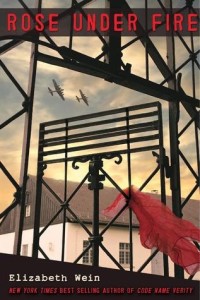Last week’s blog post discussed various types of commonly chosen magical systems in fantasy worlds. What happens, though, if you don’t want to choose a fantasy system that has already been done? What if you want to world-build your own? How do you proceed? While the most technically correct answer is “it’s your world – make up whatever you want,” there are some more common ways of going about creating magical systems that are coherent, hold together well, make sense to readers, and will help further a plot. Here are three common methods of creating one’s own magical system, as well as some things to consider when using each.
Magic Stemming from a Single External Source
First, you may choose to build a world where magic comes from a particular source that gives magic to other sources through its touch. For instance, Brandon Sanderson’s Stormlight Archives series has magic be carried in and through magnificent storms that sweep through his fantasy world regularly. Alternatively, one could choose to have magic emanate from a rock that fell from the sky, or gamma radiation, or the touch of a god, etc. Magic from an external source might also only be able to be used near that source or it may be able to be carried away or stored. This type of magic could be either “raw power” that could be shaped by mages, leading to different types of manifestations, or it could only be magic of one sort, so all mages are only able to do the same things.
The advantage of this type of magical system is that by creating a source of magic that is not similar to something found on Earth, you don’t build readers’ expectations about what the magic will do or what rules it will follow. This is up to you to decide, based on the needs of your story. Possible plot issues with this type of magical system include short-term running out of magical power or the potential destruction of the source of the magical power.
Magic Stemming from Spells and Incantations
Second, you might choose to create a world where magic is governed by spells and rules. Where the power comes from isn’t so much of the question – it could be something like “the Force,” or an innate ability that some have and others don’t – as much as is question of how it is used. By emphasizing the rules of magic, then, the author is given the ability to make magic make sense. Much more than in an elemental context or stemming-from-a-single-source context, having magic be a field of study that gifted intellectuals have built upon for hundreds of years gives you as an author the ability to create an entire culture, complete with strengths, weaknesses, and politics, based around the ability to use magic and to bend it to one’s will through careful and precise language and movement.
The advantage of this type of system is that it is human in a way that the others discussed previously are not. Human mages, in this system, discover, codify, and invent new ways of using magic, so the magic that is created can feel like it has a specific human purpose. A disadvantage of this system is that if limits aren’t set firmly in place, magical systems can tend to feel overreaching. There can be a spell for everything, making it harder for characters to actually be in danger or be a part of an interesting plot.
Magic from a Personal Source
Last, magic in your world might be limited to another race of beings besides the one to which your main character(s) belong. In this case, perhaps a single divine character has power (either limited or unlimited), or multiple characters might have different types of power (e.g. a pantheon, or elves versus druids versus fairies). In either case, magical occurrences might be expected or unexpected, might be able to be petitioned for and be granted (or not), and may either affect a story at a grand macro level (e.g. withholding rain from a country for years) or a micro level (e.g. a barren woman conceiving a child). Each magical source race in your story, then, will need to have its own ways in which it interacts with and uses its powers, what it wants in exchange for blessings, if this race interacts with your main character’s race or stays aloof, and to what extent the source of the magic can actually solve the main character’s problems.
Advantages of this magical system are that the main character, by living in a world with magic but having no way of using magic on his or her own, is suddenly made more relatable to readers who also have to navigate a mysterious and frightening world with only human abilities to draw upon. The threats to a “mere mortal” character by a character with power (e.g. a druid, a god) are also greater than threats to a character who has magical power of his own. This can lead to greater plot tension and keep reader interest. Of course, it also then means you have to work harder as an author to write clever, believable plots where your human characters can either work with divine or magical characters without being overshadowed by them, or work against divine/magical characters without being destroyed.
These are just some ideas to get you started – what other types of magical systems might you want to create? Are you more of a magical system creator or a magical system adapter (last week’s topic)? Which will you choose for your next story (and why)? Leave a comment below!




 What do pirates, explorers and children have in common? They all love treasure hunts!
What do pirates, explorers and children have in common? They all love treasure hunts!





